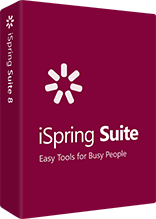How to Structure Your E-Learning Course

Maybe you’re an e-Learning pro, just looking to tweak your style to make your courses more effective. Or maybe you’re a novice, completely overwhelmed by the idea of creating mobile courses from scratch. Whatever the case, properly structuring your course will help with its creation as well as your learners’ ability to absorb and retain the knowledge.
Below, we’ll discuss how to break down your subject material into more manageable portions, organize it intelligently, and craft the rest of the presentation around it. Keep in mind that a great e-Learning course is one that both conveys what you’re trying to teach and keeps learners interested throughout, as only their engagement can guarantee long-term retention. Ready to engage? Go.
1. Decide what material to cover
Before you can begin formulating a good structure for your e-course, you must decide what material you will cover. Let’s say you’re a paper supplier to large medical corporations, for instance. Will your course teach how to find and woo prospects? How to set up purchase orders? How to deliver the paper? Of course, what you’re teaching depends on whom you’re teaching: salespeople, office personnel, warehouse workers. Decide what you want to teach, and the goals of the course, and then the material you want to cover will fall into line.
2. Group subject matter into modules
Once you’ve decided what to cover in your course, it’s time to group the subject matter into a sensible outline. Let’s say you’ve decided to create a course on setting up purchase orders. Topics could include how to use the system, how to double-check the order, how to give discounts or deals, how to record client information, and how to communicate with salespeople. These are your modules or main course sections. Each will be further broken down in the next step.
3. Break down each module into sections
Take one module at a time, organizing the material that falls underneath it into a cohesive teaching outline. For recording client information, for example, you might instruct on recording personal info, tracking purchases, noting when to call about refills, and communicating special incentives.
Now that you’ve got your subject material completely organized, it’s time to put it into slide form. If you know how to use PowerPoint well and can create your own presentation from scratch, fantastic. If not, you might benefit from prefabricated templates. These are easy ways to create themed slides without having to do a lot of the legwork yourself, so don’t be ashamed to use them.
4. Links between sections for a self-directed learning approach
This approach can help learners to go at their own pace, in their own way. To this end, you can link different sections so that learners can skip around to find the material that makes the most sense to them. If you’re not yet sure how to create links to other PowerPoint slides within your presentation, this handy tutorial will point you in the right direction.
5. Create a roadmap for the course
At the beginning of the e-course, give a little intro roadmap so students know what they’re going to learn. This helps to make the structure more intuitive and enables them to anticipate what’s coming so they can figure out how best to learn that material. Your roadmap can be written, a flowchart, a video or an audio clip. Choose what works best for you.
6. Develop a theme that reflects course structure
Reflect structure in your theme. This might mean using different background colors for separate modules, recording the module and section numbers across the bottom, or using a little bar that “fills up” as students proceed through the course. These kinds of barometers are helpful for learners as they move through the material.
No one’s claiming that crafting an e-Learning course from scratch is easy, but by breaking down your tasks into manageable chunks with intuitive structure, you can turn what seems like an overwhelming amount of material (for both you and your learners) into a much more doable educational narrative.
Do you have any tips and tricks for structuring an e-Learning course? Share them in the comments below!



